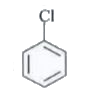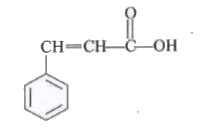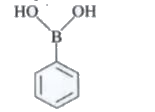Which among the following is deactivating group ?
−Cl
−OR
−NH2
−NHR
The correct Answer is:A
To determine which among the given groups is a deactivating group, we need to analyze the nature of each group and its effect on the electron density of the benzene ring. Deactivating groups are those that withdraw electron density from the aromatic ring, thereby slowing down the rate of electrophilic aromatic substitution reactions.
1. Understanding Deactivating Groups:
- Deactivating groups are typically electron-withdrawing groups. They decrease the electron density on the benzene ring, making it less reactive towards electrophiles.
2. Identifying the Given Groups:
- The groups provided in the question are: Cl (Chlorine), NH2 (Amino), NH (Amine), and R (Alkyl group).
3. Analyzing Each Group:
- Chlorine (Cl): This is a halogen. Halogens are known to be deactivating groups because they withdraw electron density through their electronegativity, despite having lone pairs that can donate electron density. Therefore, Cl is a deactivating group.
- Amino Group (NH2): This group is an activating group because it donates electron density to the benzene ring through resonance.
- Amine Group (NH): Similar to the amino group, this is also an activating group as it donates electron density to the ring.
- Alkyl Group (R): Alkyl groups are generally activating groups because they donate electron density to the benzene ring through hyperconjugation.
4. Conclusion:
- Among the given options, the only deactivating group is Chlorine (Cl).
Final Answer:
- The deactivating group among the options is Cl (Chlorine).
---
- Deactivating groups are typically electron-withdrawing groups. They decrease the electron density on the benzene ring, making it less reactive towards electrophiles.
- The groups provided in the question are: Cl (Chlorine), NH2 (Amino), NH (Amine), and R (Alkyl group).
- Chlorine (Cl): This is a halogen. Halogens are known to be deactivating groups because they withdraw electron density through their electronegativity, despite having lone pairs that can donate electron density. Therefore, Cl is a deactivating group.
- Amino Group (NH2): This group is an activating group because it donates electron density to the benzene ring through resonance.
- Amine Group (NH): Similar to the amino group, this is also an activating group as it donates electron density to the ring.
- Alkyl Group (R): Alkyl groups are generally activating groups because they donate electron density to the benzene ring through hyperconjugation.
- Among the given options, the only deactivating group is Chlorine (Cl).
- The deactivating group among the options is Cl (Chlorine).
Topper's Solved these Questions
- ORGANIC REACTION MECHANISMS - IIBOOK - RESONANCE ENGLISHCHAPTER - ORGANIC REACTION MECHANISMS - IIEXERCISE - Exercise-1 Part-3
2 Videos
- ORGANIC REACTION MECHANISMS - IIBOOK - RESONANCE ENGLISHCHAPTER - ORGANIC REACTION MECHANISMS - IIEXERCISE - Exercise-2 Part-1
11 Videos
- ORGANIC REACTION MECHANISMS - IIBOOK - RESONANCE ENGLISHCHAPTER - ORGANIC REACTION MECHANISMS - IIEXERCISE - APSP Part - 3
22 Videos
- MOLE CONCEPTBOOK - RESONANCE ENGLISHCHAPTER - MOLE CONCEPTEXERCISE - ORGANIC CHEMISTRY(BASIC CONCEPTS)
27 Videos
- ORGANIC REACTION MECHANISMS-IVBOOK - RESONANCE ENGLISHCHAPTER - ORGANIC REACTION MECHANISMS-IVEXERCISE - APSP PART-3
22 Videos
Similar Questions
Knowledge Check
Which of the following are deactivating group
ACF3−O||S||O−O−BCH3−O−O||P∣OCH3−O−CCF3DCH3−O||C−CH2−O−Which of the following are deactivating but ortho, para directing during electrophilic aromatic substitution reaction ?
A B
B C
C D
D
Which among the following is a meta directing group?
View SolutionWhich among the following is monocarpic?
View SolutionWhich among the following is paramagnetic ?
View SolutionWhich among the following is a Lewis acid?
View SolutionWhich among the following is a Lewis acid?
View SolutionWhich among the following is a Lewis acid?
View Solution
